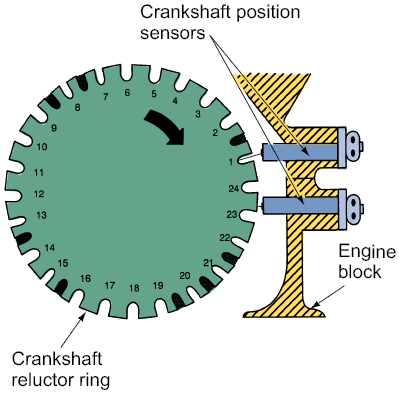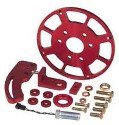..." no Photo Eye, no Hall Effect."
If so, then what triggers it?
jeff
Yes, VR..... variable reluctor, as Chris says.
Jeff, the 4, 6 or 8 cylinder reluctor would be the steel, 4, 6 or 8 pointed magnetic star wheel unit. The principle is similar to Hall Effect, in that the star wheel tips pass within close proximity of the sensor/triggering unit! VR typically incorporates a more precisionly manufactured star wheel trigger mechanism, regarding indexing.
This would be the same VR principle that Chrysler used for decades. Mallory has also used it in their YLM units for years. With Mallory's YLM...... the M = Magnetic! (YLU..... the U = photo eye)
The photo eye rotor wheel is certainly accurate, and I believe as a result of the wheel diameter being larger. And I certainly can't argue the prinicple of breaking a light beam for triggering. However, these do occasionally fail! (I've replaced more photo eye units, than I have reluctors.)
As Karl Malen says; "Don't leave home without it!" (a spare photo eye triggering unit, that is!)
I have no issues with Hall Effect when used on a larger circumference or diameter...., such as a flywheel or a crankshaft wheel of some sort. But those small diameter, cast plastic units......, and particularly the retro-fit conversion units........... I'm just not on board with the idea.
Add to this, that the Hall Effects kits (Pertronix, for example) are often installed in potentially worn and in need of an over-haul, distributors.
Sure, we end up with electronic triggering, but what have we done to improve the other aspects of the distributor? (bushings/advance unit, etc)
But that is another story, and for another day!
All work fairly well, and there is always an arguement to be had "for/against" any system......, but if given a choice, I prefer VR for the above reasons.
Old habits and personal preference, I suppose!






